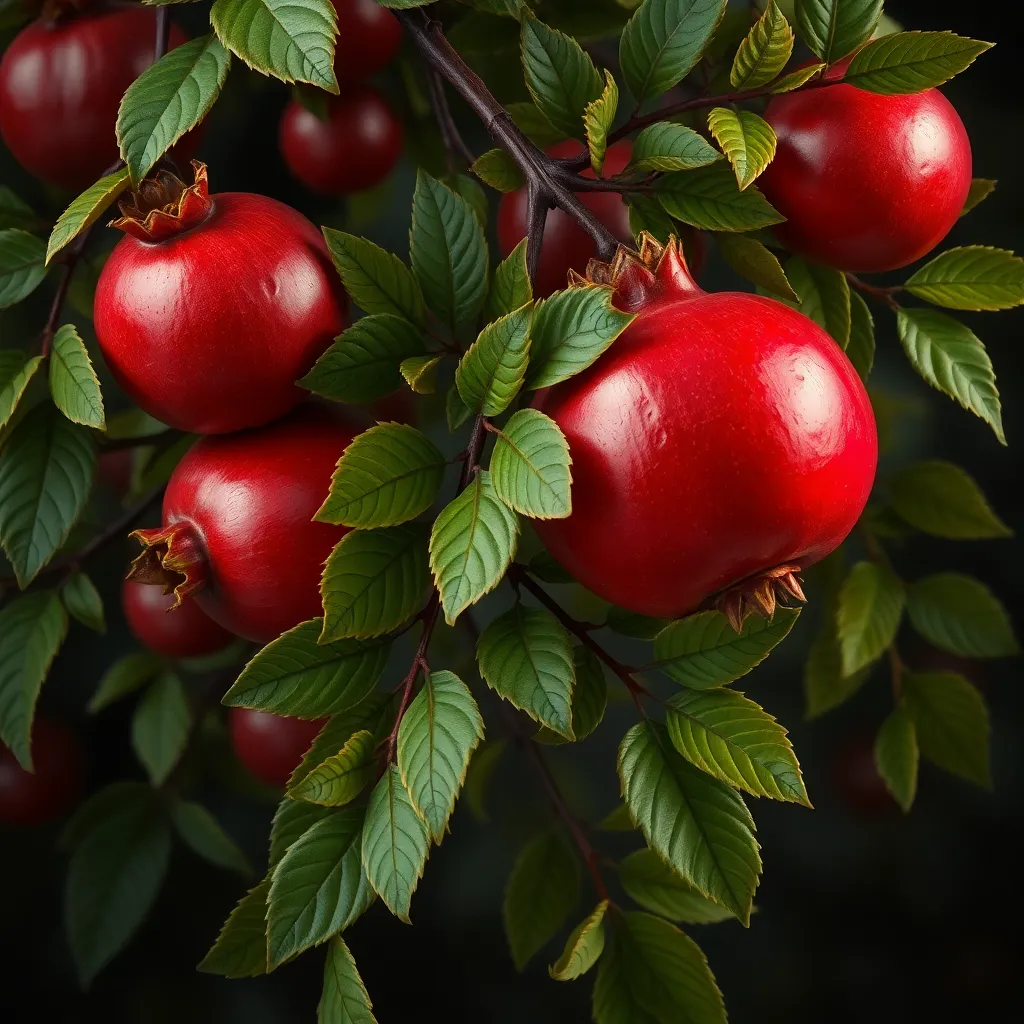The Symbolism of the Pomegranate: Demeter’s Connection to Persephone
I. Introduction
The pomegranate, with its vibrant red seeds and rich, sweet-tart flavor, has long been regarded as a powerful symbol in various mythologies around the world. In Greek mythology, it holds a particularly significant place, especially in the story of Demeter and her daughter Persephone. This article aims to explore the deep symbolism of the pomegranate in their narrative, examining how it embodies themes of life, death, and rebirth.
II. The Myth of Demeter and Persephone
The myth of Demeter and Persephone is one of the most poignant tales in Greek mythology, encapsulating the essence of maternal love, loss, and the cyclical nature of life. According to the myth, Demeter, the goddess of agriculture, had a cherished daughter named Persephone. One day, while picking flowers in the meadow, Persephone was abducted by Hades, the god of the Underworld.
Demeter’s grief was profound, leading her to neglect the earth, causing crops to wither and famine to spread. In her desperation, she sought her daughter, eventually learning of her fate. The myth unfolds with themes of loss, renewal, and the changing seasons, as Demeter’s sorrow led to the barren winter months, while her joy upon Persephone’s return heralded the arrival of spring.
The pomegranate plays a crucial role in this narrative. When Persephone was in the Underworld, she was offered pomegranate seeds by Hades. Eating these seeds bound her to him and the Underworld, symbolizing her dual existence between life above and death below.
III. The Pomegranate as a Symbol of Life and Death
The pomegranate’s significance lies in its dual nature, representing both fertility and mortality. This fruit is often associated with life due to its many seeds, symbolizing abundance and fertility. However, its connection to death is equally profound, particularly through its association with the Underworld.
- Fertility: The numerous seeds of the pomegranate represent new life and the potential for growth. In agricultural societies, it was seen as a harbinger of fertility and harvest.
- Mortality: Consuming the pomegranate seeds signifies a connection to the Underworld, representing the inevitability of death and the cycle of life.
The pomegranate’s role in Persephone’s descent to the Underworld encapsulates these themes. By consuming the seeds, Persephone becomes intertwined with Hades, symbolizing the unavoidable cycle of life, death, and rebirth that defines human existence.
IV. Cultural and Historical Significance of the Pomegranate
In ancient Greek culture, the pomegranate was more than just a fruit; it was a symbol of prosperity and fertility, often associated with various deities. It was also a common motif in funerary art, symbolizing the afterlife.
The pomegranate’s symbolism extends beyond Greece, appearing in various cultures and religions:
- Judaism: The pomegranate is often associated with righteousness and is a symbol of the 613 commandments in the Torah.
- Persian Culture: In Persian literature, the pomegranate represents love, fertility, and the promise of spring.
- Christianity: The fruit is sometimes linked to resurrection and eternal life, as seen in various artistic depictions.
Artistically, the pomegranate has been represented throughout history, from ancient pottery to Renaissance paintings, often as a symbol of life, death, and divine love.
V. Psychological Interpretations of the Pomegranate
Psychologically, the pomegranate can be viewed as a symbol of inner conflict and transformation. It embodies the duality of existence, representing the struggle between life and death, joy and sorrow.
- Archetypal Analysis: The figures of Demeter and Persephone can be seen as archetypes representing the mother and daughter dynamic, illustrating themes of separation, loss, and reunion.
- Modern Psychology: The pomegranate’s symbolism resonates with contemporary psychological themes, such as the journey of self-discovery and the acceptance of life’s cyclical nature.
These interpretations allow for a deeper understanding of the complex emotions associated with the myth and its enduring relevance today.
VI. The Pomegranate in Literature and Art
The pomegranate has appeared in various works of classical literature, often symbolizing themes of love, beauty, and the passage of time. For instance, in Homer’s “Hymn to Demeter,” the fruit serves as a pivotal element in Persephone’s story.
In art, the pomegranate has been depicted in numerous paintings and sculptures. Noteworthy examples include:
- Renaissance Art: Artists such as Botticelli illustrated the pomegranate in connection with Venus, symbolizing love and fertility.
- Modern Art: Contemporary artists have reinterpreted the pomegranate, using its symbolism to explore themes of identity and duality.
In popular culture, references to the pomegranate can be found in literature, music, and film, often reflecting its rich symbolic heritage.
VII. The Pomegranate’s Role in Rituals and Festivals
The pomegranate features prominently in rituals and festivals celebrating nature and harvest. In ancient Greece, the Eleusinian Mysteries honored Demeter and Persephone, celebrating the cycle of life and the changing seasons.
- Harvest Festivals: The pomegranate is often included in harvest celebrations, symbolizing abundance and fertility.
- Modern Rituals: Today, many cultures incorporate the pomegranate into seasonal festivities, celebrating its rich symbolism of life and renewal.
These rituals continue to connect communities with the cycles of nature, celebrating both the joys of life and the inevitability of death.
VIII. Conclusion
The pomegranate serves as a profound symbol in the myth of Demeter and Persephone, encapsulating themes of life, death, and rebirth. Its enduring symbolism resonates across cultures and epochs, representing the interconnectedness of existence.
As we reflect on the significance of the pomegranate, we are reminded of the cyclical nature of life—the inevitable intertwining of joy and sorrow, growth and decay. Through the lens of mythology, the pomegranate continues to inspire and provoke thought about our own journeys through life.




